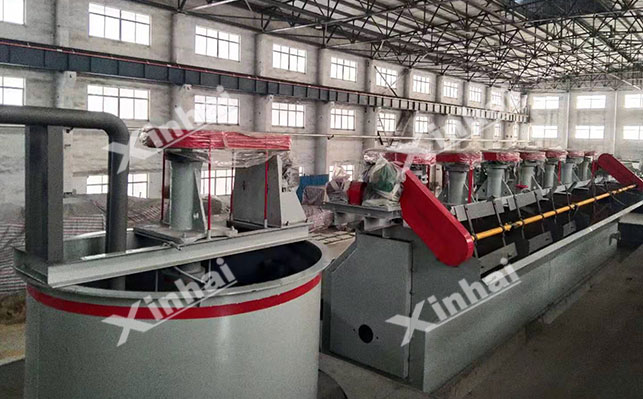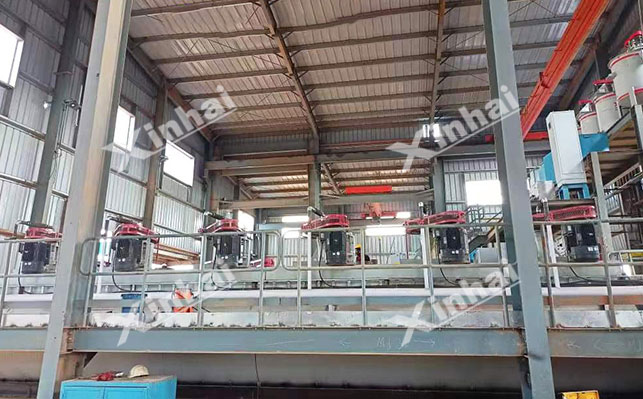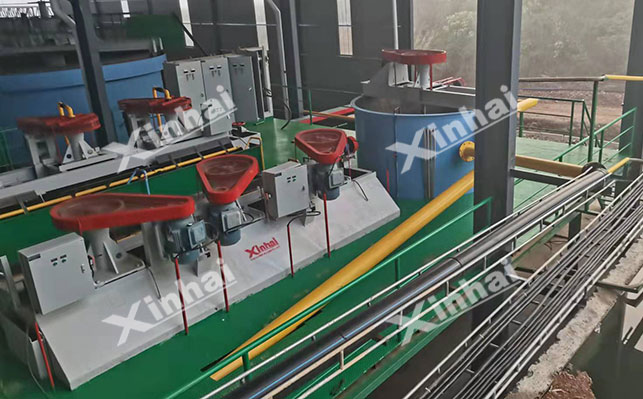
15311826613
Click to add WeChatCopper metal resources are widely used in industrial production and social life. With the continuous development of the times, the demand for them is increasing. However, since ore is a non-renewable resource, it is of great significance to the redevelopment of copper mines. Due to the backward technologies of early mining, mineral processing and equipment manufacturing, some valuable copper metals were left in the tailings. Therefore, the reselection of this part of the tailings is the main channel for obtaining the same resources. Let's take a look at what are the reselection processes for copper oxide tailings?

At present, the commonly used reselection processes for copper oxide tailings include flotation and leaching.
When the copper content in copper oxide tailings reaches about 0.5%-1%, the conventional flotation process may have a certain recovery value. Commonly used flotation methods are conventional flotation, chelating agent flotation and sulfide flotation.
Conventional flotation is based on the differences in the physical and chemical properties of the mineral surface, using flotation agents to selectively attach copper oxide minerals to bubbles, thereby achieving separation from gangue minerals. The ore that has been crushed is slurried to achieve a suitable acidity, and then a fatty acid collector (oleic acid, oxidized paraffin soap, etc.) is added to react with the surface of the copper oxide mineral to make it hydrophobic. At the same time, a foaming agent (such as pine oil) is added to generate bubbles, which brings the hydrophobic copper oxide minerals to the surface of the slurry to form a foam layer, thereby achieving recovery. This flotation method is mostly suitable for tailings with fine particle size and relatively uniform particle size of copper oxide minerals.

Chelating agent flotation is to use chelating agents to form stable chelates with metal ions on the surface of copper oxide minerals, making the mineral surface hydrophobic, thereby improving the flotation effect. The general principle process is to add specific chelating agents (hydroxamic acids, xanthates, etc.) to the ore pulp after grinding, which can selectively combine with copper oxide minerals, and then add frothers for flotation. This type of flotation is mostly suitable for processing some difficult-to-select copper oxide tailings, especially those containing more siliceous gangue minerals.
Sulfidation flotation is to first sulfidate the copper oxide minerals to form a copper sulfide film on the surface, and then use the flotation agent for copper sulfide to flotate. The principle process is to add a quantitative sulfiding agent (such as sodium sulfide) to the ore after grinding, and then add a xanthate collector and a frother for flotation. This type of flotation is mostly suitable for copper oxide minerals such as malachite and azurite. Especially when the floatability of copper oxide minerals in tailings is poor, the sulfidation flotation method can effectively improve its recovery rate.

When the copper content in the copper oxide ore is above 0.3%-0.5%, the leaching process is used for reselection, and the recovery efficiency is relatively high. The main reason is that the leaching process is relatively adaptable to low-grade ores, especially some copper oxide minerals with relatively active chemical properties and easy to react with leaching agents. Commonly used leaching processes include acid leaching, ammonia leaching and biological leaching.
The acid leaching method uses acid to react with copper oxide minerals to dissolve copper into the solution, and then recover copper from the solution through subsequent treatment methods. The process is to mix copper oxide tailings with acid solutions such as dilute sulfuric acid or hydrochloric acid, and react under certain conditions such as temperature and stirring speed. After the reaction is completed, solid-liquid separation is performed to obtain a copper-containing leaching solution. The leaching solution is then extracted-electrodeposition or displacement to recover copper from it. This leaching method is mostly suitable for tailings with high copper oxide content and relatively low impurity content.

The ammonia leaching method is that the oxidized copper minerals can be dissolved in the ammonia-ammonium salt solution to form a copper-ammonia complex, thereby realizing the leaching of copper. The process is to add the oxidized copper tailings to a solution containing ammonia and ammonium salts, and carry out the leaching reaction under certain temperature, pressure and other conditions. After the reaction is completed, the solid-liquid separation is carried out to obtain a copper-containing ammonia leaching solution. Then, copper is recovered from the ammonia leaching solution by ammonia evaporation, extraction-electrodeposition, etc. This method is mostly suitable for treating tailings containing more copper carbonate minerals (such as malachite), and the ammonia leaching method has a better effect.
The bioleaching method uses the metabolism of microorganisms to oxidize the copper in copper oxide minerals and dissolve it into the solution. The process is to first cultivate and domesticate the microorganisms to adapt them to the environment of copper oxide tailings, and then inoculate the domesticated microorganisms into the leaching system containing copper oxide tailings, and perform bioleaching under appropriate temperature, pH value, ventilation conditions, etc. The metabolites (such as sulfuric acid, iron ions, etc.) produced by microorganisms during growth can react with copper oxide minerals to dissolve copper into the solution. After leaching is completed, solid-liquid separation is performed to recover copper from the solution. This method is mostly suitable for treating low-grade and difficult-to-treat copper oxide tailings, especially for copper oxide minerals containing a large amount of gangue minerals.
The above is an introduction to the process of reselection of oxidized copper tailings. In actual ore dressing plants, due to the differences in the properties of oxidized copper tailings ores, it is necessary to select appropriate treatment methods or a combination of multiple methods based on the specific characteristics of the tailings (such as mineral composition, grade, particle size distribution, impurity content, etc.), combined with economic costs, environmental impacts and other factors. Therefore, it is recommended to conduct ore dressing test analysis and design a suitable oxidized tailings reselection process according to actual conditions.